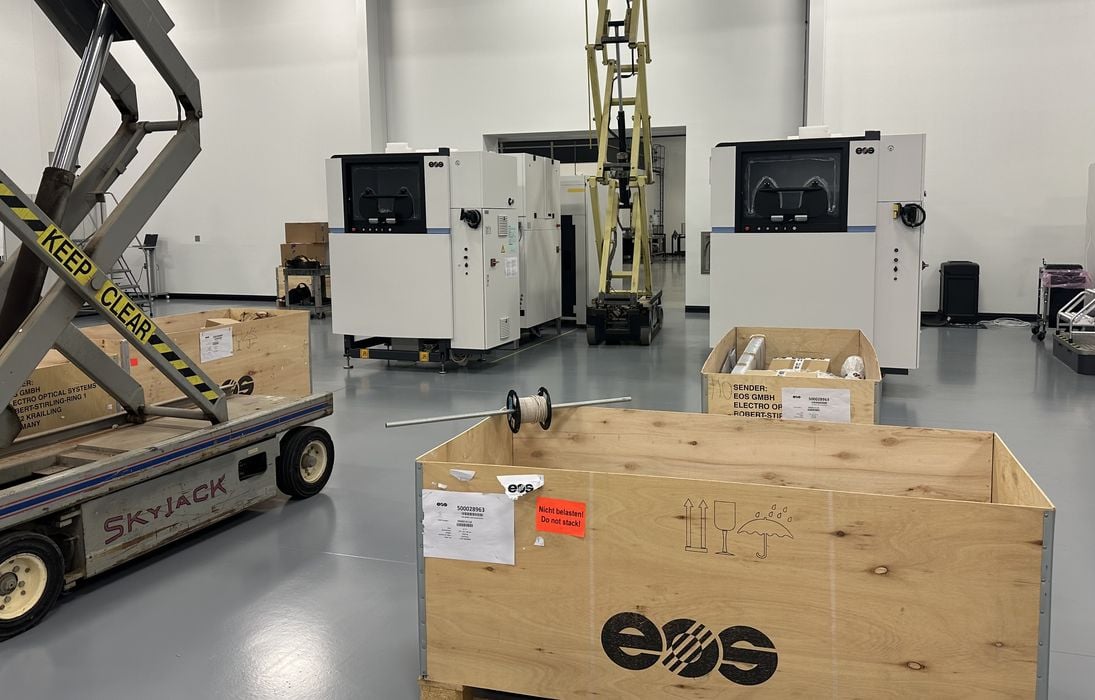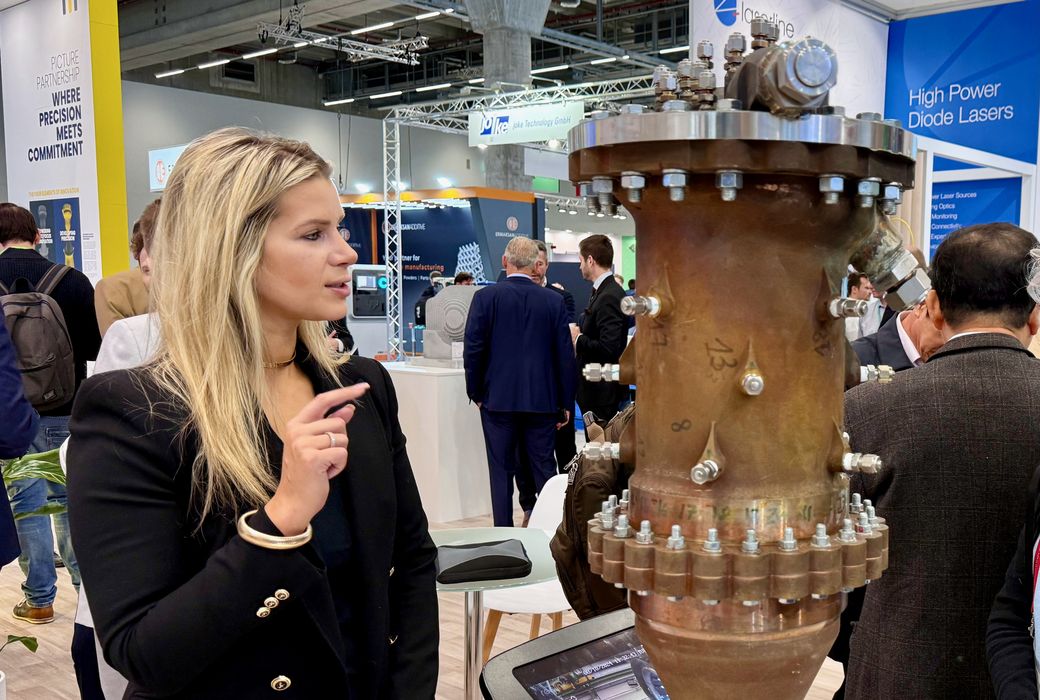
Two of the largest metal 3D printer manufacturers have announced record milestones.
Some weeks ago, Nikon SLM Solutions revealed that they had sold their 1,000th system, which turned out to be purchased by Bosch. The machine sold was one of their largest machines, the massive twelve-laser NXG XII 600, which sports a build volume of 600 x 600 x 600 mm.
This is sufficient to build large, precision parts, such as this rocket thrust chamber, made with CUCr1Zr material. This particular design has been hot-fired, and demonstrates how Nikon SLM equipment has enabled customers in aerospace and energy sectors to succeed.

This week, EOS also reached a milestone, announcing the sale of their 5,000th industrial 3D printer. The milestone machine, an EOS M 400-4, was acquired by Keselowski Advanced Manufacturing, which now operates no less than 18 EOS devices.
EOS CEO Marie Langer explained:
“Our organization was a startup within a startup industry. There was no such thing as additive manufacturing when EOS was launched with a clear vision from my father. We can proudly call ourselves AM pioneers, but it is our continued innovation and unwavering desire to ensure our customers are successful that has allowed us to reach this milestone. While 5,000 machines are impressive, we have barely left the starting blocks. The possibilities are endless, and I’m both confident and excited about the greater milestones we’ll undoubtedly achieve.”
It’s not a surprise that both companies’ milestone machines were designed to 3D print metal objects. Metal additive has become a standard approach in several industries, most notable aerospace. That industry has the essential combination of two factors: a need for lightweight parts enabled by complex geometries only producible by additive approaches, and the financial capability of customers to pay for more expensive parts.
The production of rocket engines, one of which is shown above, has now mostly shifted to additive approaches due to the tremendous advantages of the technology. These advantages have transformed into more functional and inexpensive solutions for rocket makers, which in turn has led to more demand for them. That means more rockets, and more metal 3D printing.
Similar effects are growing in other industries, including aerospace and high-end automotive.
This growth is with metal applications, and we haven’t yet seen similar explosive applications for polymer 3D printing, with the possible exception of dental aligners, which are now mostly 3D printed to match the patient.
The moral of the story here is simply that growth in 3D printing occurs when there’s a good match between technology capabilities and application needs. It’s up to everyone to look hard for those matches, and when they’re found, big things can happen.
Via EOS and Nikon SLM Solutions
